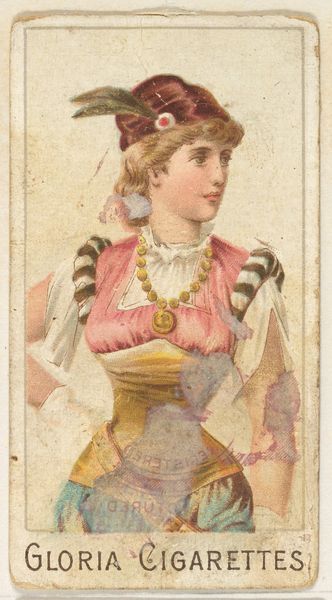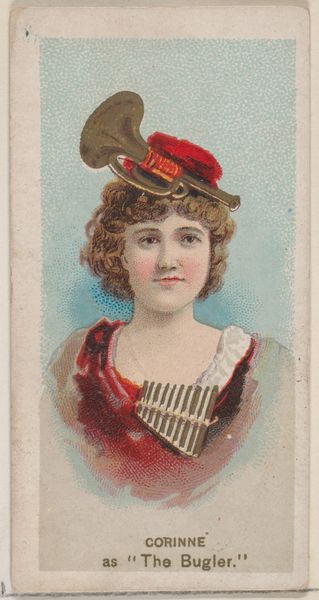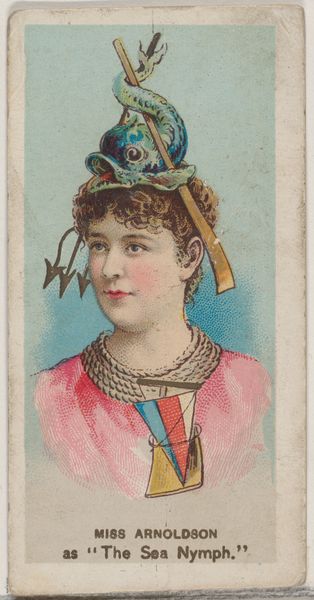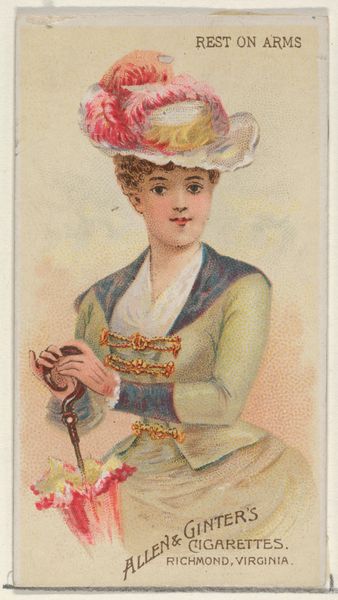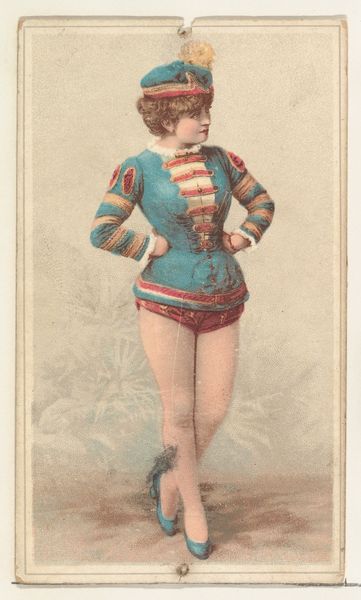
From the series "Sports Girls" (C190), issued by the American Cigarette Company, Ltd., Montreal, to promote Gloria Cigarettes 1885 - 1895
0:00
0:00
drawing, print
#
portrait
#
drawing
# print
#
impressionism
#
figuration
#
academic-art
Dimensions: Sheet: 2 5/8 x 1 7/16 in. (6.6 x 3.7 cm)
Copyright: Public Domain
Editor: This small drawing, part of the "Sports Girls" series made to promote Gloria Cigarettes between 1885 and 1895, portrays a woman in athletic garb. The colors are quite faded, giving the whole image a soft, almost dreamy quality. What's striking to me is how this commercial print attempts to portray athleticism. What are your initial thoughts on this piece? Curator: Immediately, I see a clear example of the intersection of capitalist production and the construction of gender roles. These cards were cheap, mass-produced items – ephemera designed to be consumed and discarded along with the cigarettes themselves. But let’s consider the labor involved: from the cultivation of tobacco, to the printmaking processes that created this image, to the very act of distributing it. Does the woman depicted, and the context of a "Sports Girl", actually signify empowerment or does it reinforce existing ideas of female beauty and desirability in the marketplace? Editor: So you are saying we should look beyond the surface representation and investigate the process of its creation and consumption? Curator: Precisely. The card’s materiality—the paper stock, the printing inks—speaks to its purpose: a fleeting advertisement embedded in a much larger economic structure. This piece isn’t simply about aesthetics or idealized womanhood. It's a commodity, meant to drive sales. And those "academic-art" qualities are really just designed to sell the product, to appeal to a certain class. The entire series becomes part of the culture of consumption. Who profits, and what message does it really convey about women and sports? Editor: That's a perspective shift. Thinking about this piece as a commercial object rooted in manufacturing processes, distribution, and marketing, as well as its social implications, is extremely interesting. I never would have thought of it that way. Curator: It demonstrates how everyday objects, often dismissed as trivial, can reveal powerful insights into the material conditions and power dynamics of their time. Consider the workers, both men and women, involved in all stages, from tobacco production, card printing to marketing. Who are they and what is their reward? This type of art isn't necessarily fine art as we consider it. It is, first and foremost, part of the machine of commodity production. Editor: I see this commercial card in a very different light now, appreciating its cultural context beyond just its surface aesthetic.
Comments
No comments
Be the first to comment and join the conversation on the ultimate creative platform.

